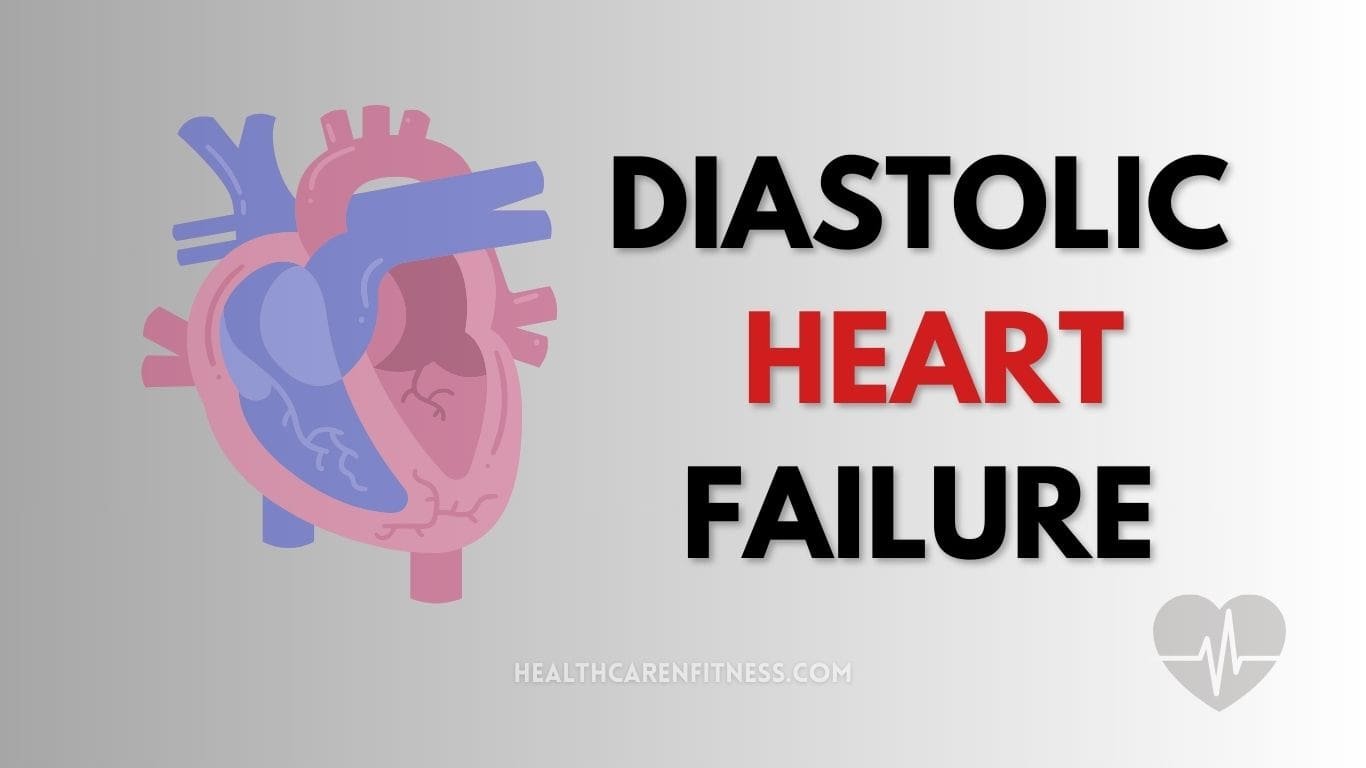
Introduction
Diastolic heart failure, also known as heart failure with preserved ejection fraction (HFpEF), is a condition where the heart’s lower chambers, the ventricles, do not relax and fill with blood properly. This condition can lead to a variety of symptoms and complications. In this comprehensive guide, we will dive into the world of diastolic heart failure, understanding its causes, symptoms, diagnosis, and management.
What is Diastolic Heart Failure?
It is a type of heart failure where the heart’s ability to fill with blood during the resting phase (diastole) is impaired. As your left ventricle becomes stiff, the heart couldn’t relax as it does normally. Unlike systolic heart failure, where the heart’s pumping function is affected, in this type of heart failure, the heart’s pumping ability remains preserved. However, its ability to relax and fill with blood is compromised.
Causes
Due to old age, our blood vessels becomes less flexible, in this cases heart failure is most common, however other than this the most common causes are as follows:
- Hypertension: High blood pressure or Hypertension can result in thickening and stiffening of the heart muscle, making it harder for the ventricles to fill with blood.
- Obesity: Excess body weight can increase the risk of diastolic heart failure, as your heart tends to work harder to pump blood.
- Diabetes: Uncontrolled diabetes can contribute to heart muscle stiffness.
- Coronary Artery Disease: Narrowed or blocked coronary arteries can impair blood flow to the heart.
Recognizing the Symptoms
- Shortness of breath, especially during physical activity.
- Fatigue and weakness.
- Fluid retention causes swelling in the legs, ankles, or abdomen.
- Rapid or irregular heartbeat.
- Lack of appetite, Nausea.
What are 4 stages of Diastolic Heart Failure?
There are four stages of diastolic heart failure, classified according to the severity of the symptoms and the impact on the heart’s ability to function.
Stage A: This is the earliest stage, and there are no symptoms. However, the heart may show signs of damage on an echocardiogram, such as thickening of the heart muscle or reduced flexibility
Stage B: At this stage, people may start to experience symptoms, such as shortness of breath during exercise and fatigue. The heart may also be enlarged, and the left ventricle may not be able to fill with blood as well as it should.
Stage C: At this stage, the symptoms of diastolic heart failure are more severe and may include shortness of breath at rest, swelling in the legs and ankles, and rapid or irregular heartbeat. The heart may also be failing to pump enough blood to the body, which can lead to low blood pressure and dizziness.
Stage D: This is the most advanced stage of diastolic heart failure, and it is characterized by severe symptoms and a high risk of complications, such as heart failure, stroke, and kidney failure. People with stage D may need to be hospitalized or receive a heart transplant.
Diagnosing
Diagnosing it often involves a combination of medical history, physical examinations, and tests such as echocardiography, which assesses the heart’s structure and function. Other tests may include blood tests, electrocardiograms (ECGs), chest X-ray and stress tests.
Lifestyle Modifications
- Diet: Reduce salt intake and maintain a heart-healthy diet can help manage fluid retention.
- Exercise: Regular, moderate exercise can improve cardiovascular health.
- Weight Management: Being at a healthy weight makes it easier for your heart to beat.
- Smoking Cessation: Quitting smoking is crucial to improve overall heart health.
Medications
- Diuretics: These help reduce fluid buildup and ease swelling.
- Beta-Blockers: These medications can slow the heart rate and lower blood pressure.
- Calcium Channel Blockers: This helps in relaxing blood vessels and reduce the heart’s workload.
- SGLT2 inhibitors: This is most commonly used for diabetes, in this case can help the heart work more efficiently by increasing circulatory ketone bodies.
Surgical Interventions
In severe cases, procedures like angioplasty or stent placement may be required to treat underlying coronary artery disease.
Regular Monitoring
Managing diastolic heart failure is an ongoing process. Regular follow-ups with a healthcare provider are essential to monitor symptoms and adjust the treatment plan as needed.
FAQs
Is diastolic heart failure the same as congestive heart failure?
No, congestive heart failure refers to a condition where fluid buildup occurs, often due to heart failure. Diastolic failure is a specific type of heart failure where the heart’s relaxation is impaired.
Can diastolic heart failure be prevented?
While it may not always be preventable, adopting a healthy lifestyle, managing blood pressure, and controlling diabetes can reduce the risk.
What role does medication play in managing diastolic heart failure?
Medications can help control symptoms and reduce the risk of complications. They are often a crucial part of the treatment plan.
Can this condition be reversed?
With the right treatment and lifestyle changes, symptoms can often be managed effectively. However, reversing the condition may not always be possible.
Conclusion
Diastolic heart failure is a challenging condition, but with proper management, many individuals can lead fulfilling lives. Understanding the causes, recognizing the symptoms, and following a comprehensive treatment plan are vital steps in managing it. Remember, early diagnosis and regular medical care are essential for maintaining heart health and overall well-being.

